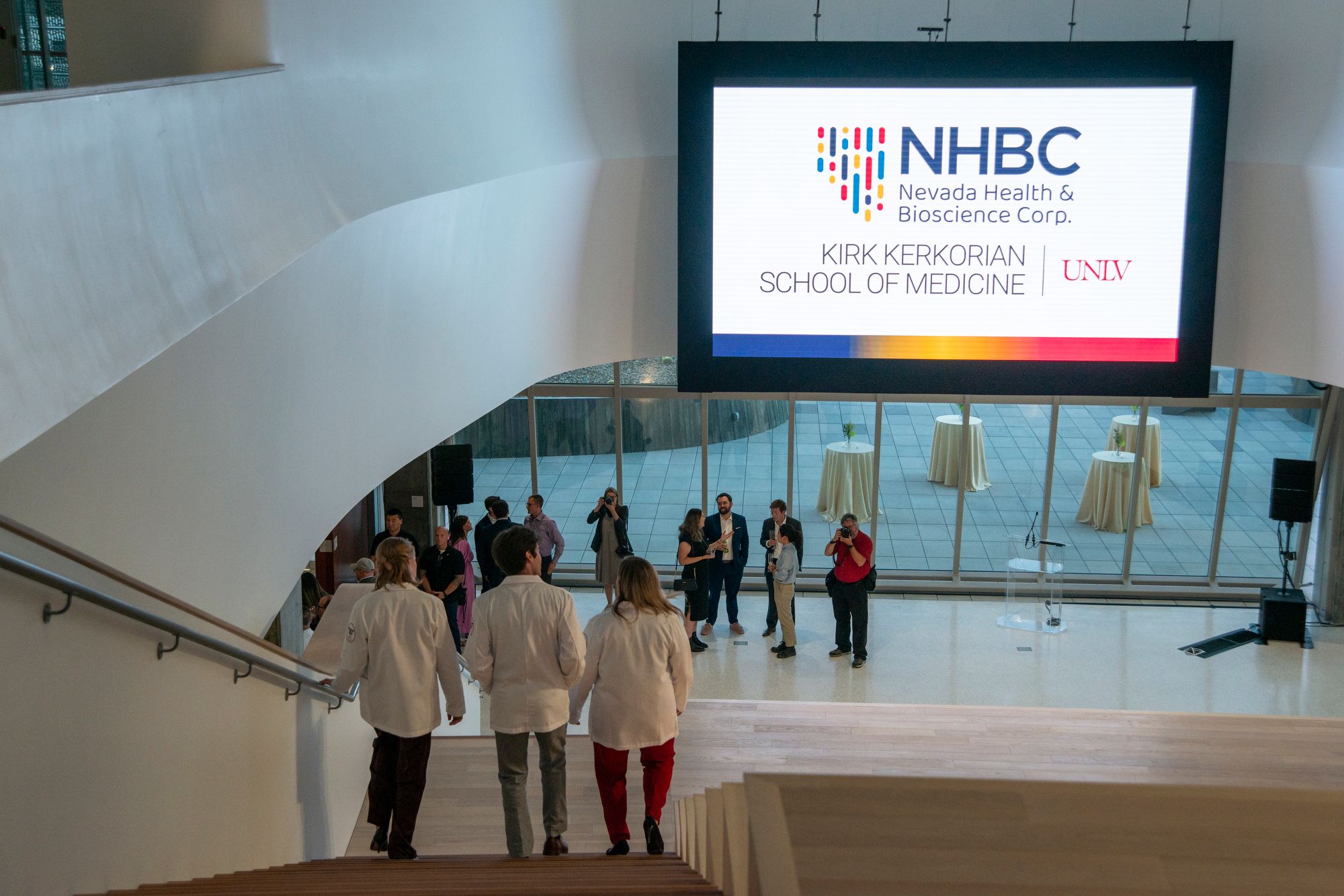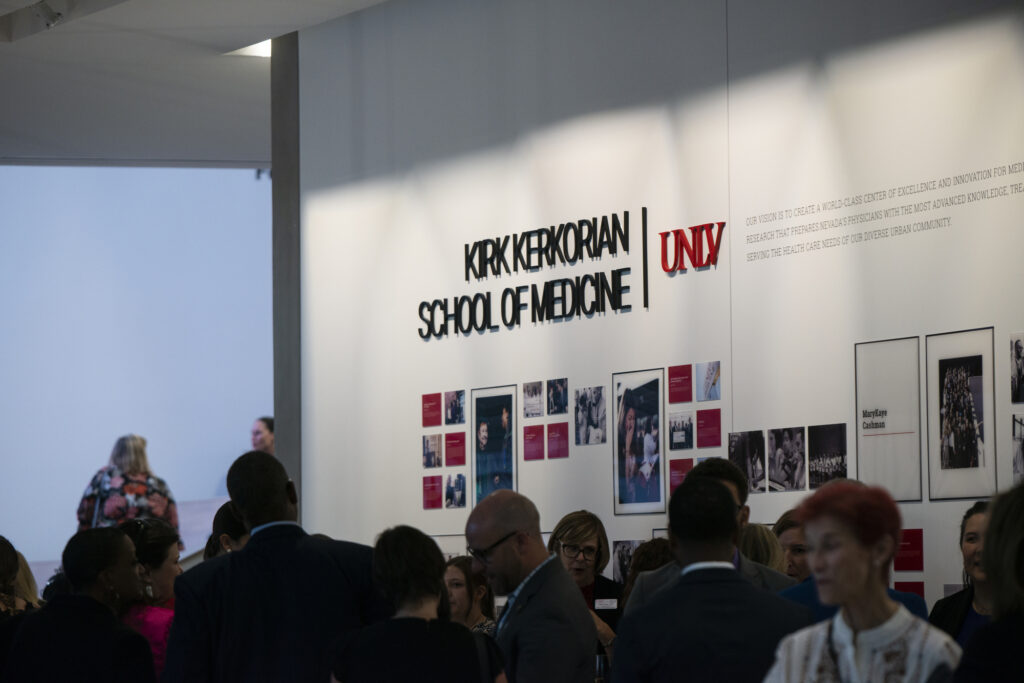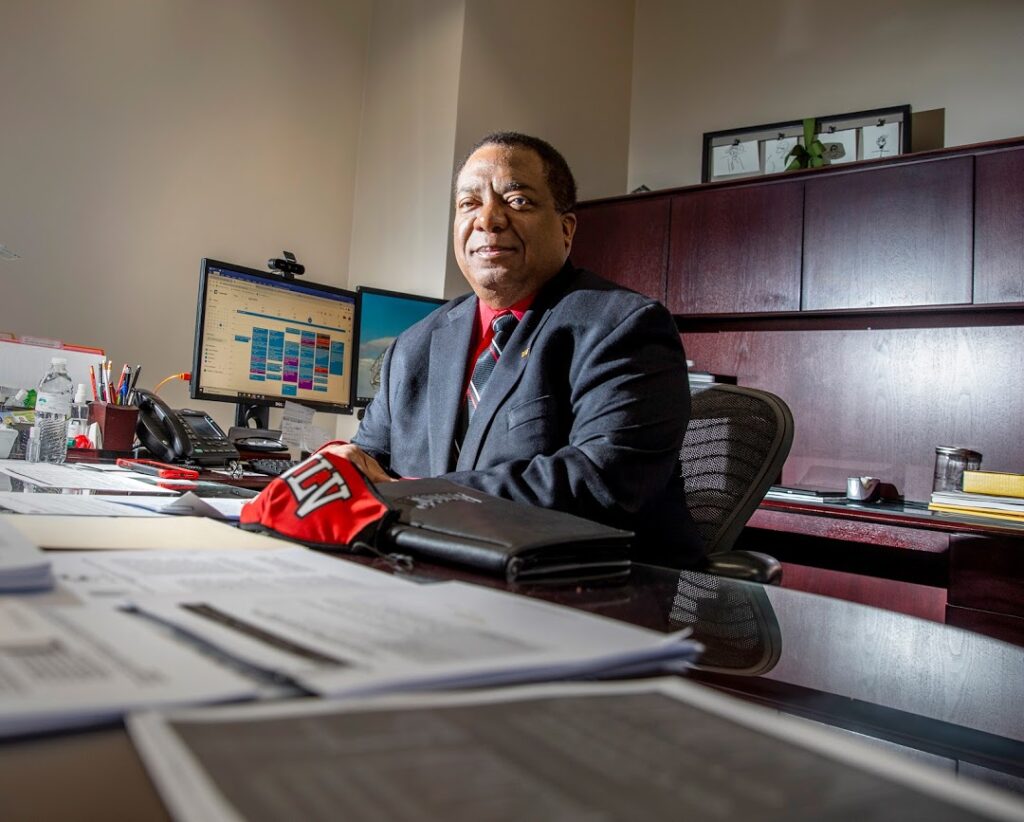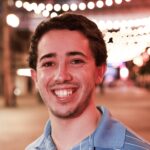Plan for UNLV health building axed amid tension with development group

Two years ago, officials celebrated the construction of UNLV's $125 million medical school building that arrived cheaper and earlier than expected — but they had greater ambitions.
The goal? To create a mental and physical health building on the school’s campus that would house UNLV’s mental health programs and an outpatient care center to serve as a breeding ground for UNLV medical students and shore up Southern Nevada health disparities. Officials estimated 200,000 people could be served annually by the outpatient center.
State lawmakers approved $35 million in federal pandemic funds for the outpatient center, and the donors who bankrolled the medical school building were to cover the rest of the project, expected to cost nine figures.
Now, the project is no more.
The building plan collapsed earlier this year amid a deteriorating relationship between the university and the Nevada Health and Bioscience Corporation (NHBC), the development group behind the medical school building and the new clinical building, according to documents and interviews.
The saga of the worsening relationship included a proposal from NHBC to amend the original agreement with UNLV, a counterproposal that was dismissed “with no input whatsoever” and feuds about the upkeep of the medical school building. It has resulted in an uncertain future for the full development of the 9-acre medical school campus.
“It’s a significant loss for the community,” said Warren Hardy, an NHBC lobbyist. “It’s a free building for crying out loud.”
Hardy, a former Republican state senator, said UNLV repeatedly acted in bad faith and that donors who funded the medical school building may be unlikely to financially support the university in the future. Meanwhile, UNLV President Keith Whitfield said the university could not agree to the terms requested by the donors but was committed to rebuilding the school’s relationship with them.
The tension marks another potential financial blow to UNLV, which learned in May that one of its top donors, the Engelstad Foundation, would no longer be supporting the university because of a “poor and unacceptable” relationship with the university’s leadership and the dean of the medical school.
In a letter announcing her decision, Kris Engelstad, the foundation’s CEO and an NHBC board member, wrote that leadership’s actions “have effectively stifled” several projects, including the mental and physical health building.
Hardy anticipated a murky relationship between the other NHBC board members and UNLV in the future.
“I would be surprised, frankly, if the rest of the board ever did another project with UNLV,” he said. “There was disrespect shown.”
Whitfield, meanwhile, acknowledged the relationship has not improved this year, but he said he hopes it will in the future.
“I don't think [improving the relationship] has been achieved, but I think that there's concerted efforts on both sides,” he said.

The new building
The construction of UNLV’s medical school building was completed in 2022, leaving an extra $20 million that the donor group wanted to use to jump-start other medical projects, Hardy said.
Both sides favored the construction of the clinical building. It would have housed UNLV’s mental health efforts (that are currently part of the school’s main campus) and an ambulatory care center — which is a general term for an outpatient facility — that would also function as a training opportunity for UNLV students and medical residents. The building also was expected to have a component specializing in pediatric cardiology.
“Mental health and physical health go hand in hand together,” Whitfield said. “So one of the goals that we had as a university was to try to find out ways in which we can try to make better links between the two. And this happened to be something that the folks from NHBC and the donors behind them were interested in as well.”
State leadership was on board as well. In August 2022, the state’s Interim Finance Committee (IFC) — a group of lawmakers that makes funding decisions when the Legislature is not in session — approved using $70 million in pandemic relief funding for UNLV’s medical school: $35 million for the clinical building and $35 million for a public health laboratory that would mirror a similar laboratory at UNR. This funding was part of more than $150 million in approved pandemic funds for public health projects.
“[T]his facility will support improved public health education and services to create teams that are better prepared for potential future health care crises or pandemics,” the state proposal for the building said.
But last month, the IFC rescinded the $35 million for the clinical building without discussion, essentially closing the book on the project.

What went wrong?
While signs of a souring relationship began last year regarding the upkeep of the medical school building, the first sign that the mental and physical health building may not move forward came in January.
In a letter to Whitfield, NHBC CEO Maureen Schafer requested changes to the original contract with UNLV.
Under provisions of the original contract, NHBC would control the 9-acre medical campus property until 2030, after which full control would revert to UNLV. Schafer requested changing the contract to give NHBC the right to own the land for 30, 50 or 99 more years, while UNLV would receive a charitable donation equal to the value of the long-term lease, which could have been as high as $420 million over 99 years, according to an accounting firm’s estimates provided by NHBC.
In an interview, Hardy, the NHBC lobbyist, said the donors behind the project wanted to follow this method because the NHBC ownership of the medical school land has so far worked out.
UNLV disagreed.
In a response in February, lawyers for UNLV said under the proposal the university would have “no certainty as to the long-term future” of the medical campus land. It also said the suggested charitable donations were not “tangible, and certainly not substantive enough to give up its carefully negotiated” right to control the land in 2030.
Asked why the proposed donations were insufficient, Whitfield said UNLV’s rejection resulted, in part, from wanting to conduct things by the book, rather than leasing the land to another party for an extended period of time.
“Typically, you don't rent your medical school,” he said.
However, the university suggested a counterproposal, in which the 9-acre property would be subdivided into parcels, including ones for the pathology lab and clinical building that would be owned by NHBC. In return, UNLV would either take ownership of the rest of the land at the same time, or take ownership of all other land except the medical school building at that time, with the medical building land reverting to UNLV control with no restrictions in 2030.
This proposal, according to UNLV, “was summarily dismissed by NHBC with no input whatsoever.”
Hardy said UNLV should have abided by the donors’ requests because they are the reason for the medical campus.
“The donors said, ‘Look, if you want us to be involved, this is our preferred [method], this is how it's going to be,” he said. “I just can't emphasize enough, there was nothing unreasonable. All they wanted was accountability and transparency — that is not too much to ask.”
Another key point of contention was the composition of the NHBC board. According to Hardy, UNLV was entitled to appoint four members to the board, giving university-appointed members a majority and the ability to dissolve the organization if desired.
Whitfield didn’t see it that way. He said some board members were thought to represent UNLV but were not hand-picked by the university, and there were never discussions about dissolving the development corporation.
Nevertheless, the clinical building project is over, but the pandemic funds have not been rescinded for the pathology lab. Patty Charlton, the chancellor for the Nevada System of Higher Education, said in an interview that she is optimistic about the lab project moving forward.
Meanwhile, Hardy said the donors are committed to fulfilling the goals of the clinical building elsewhere.
“They're not walking away from any of those projects that were going to go in that building, they're just not going to do them there,” he said.
